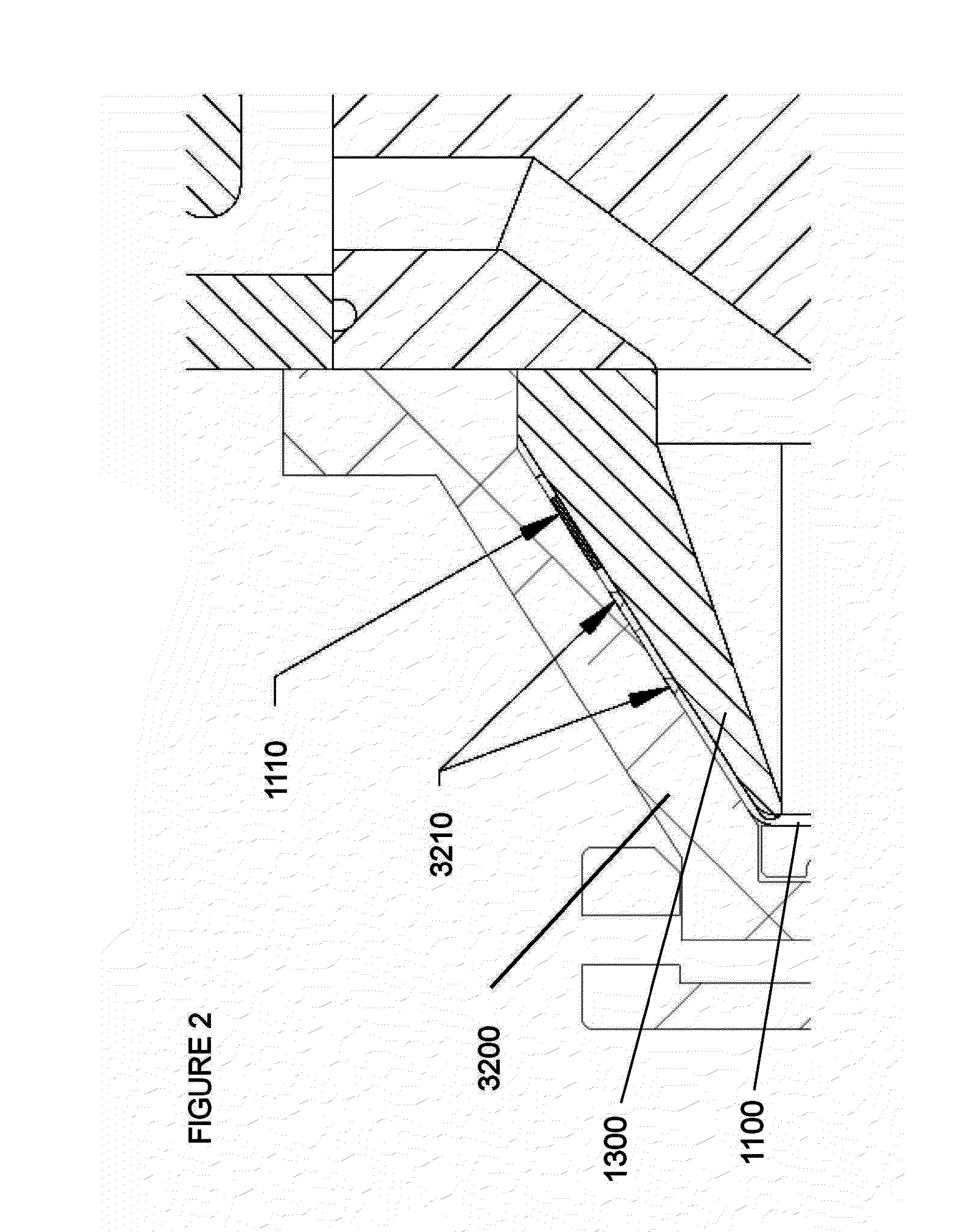Single use centrifuge system for highly concentrated and/or turbid feeds
a single-use centrifuge and feed technology, applied in the field of cell culture, can solve the problems of unacceptably long cell harvest processing time, reduced net throughput rate, and inability to use pre-sterilized components for cell culture harvesting, etc., to achieve efficient processing of highly concentrated cell culture streams, minimize feed turbidity, and high angular velocity
- Summary
- Abstract
- Description
- Claims
- Application Information
AI Technical Summary
Benefits of technology
Problems solved by technology
Method used
Image
Examples
Embodiment Construction
[0033]The present invention comprises apparatus and methods for continuous or semi-continuous centrifugal separation of low viability cell suspension cultures containing a high concentration of cells and cell debris, at a rate suitable for processing large volumes of cell suspensions on a commercial scale. The centrifuges of the present invention are of pre-sterilized, single-use design and are capable of processing such cell suspensions at flow rates exceeding 20 liters per minute. This flow capacity enables total run times in the range of 2 to 3 hours for a 2000 liter bioreactor. More preferably, the single-use centrifuge systems are capable of processing about 300 to 2,000 liters of fluid while operating at a rate of about 2 to 40 liters per minute.
[0034]FIG. 1 discloses single use centrifuge structure 1000. The centrifuge structure 1000 includes a core structure 1500 (best seen in FIG. 3) comprising a core 1510, upper flanges 1300, lower flanges 1200, and a flexible liner 1100 s...
PUM
| Property | Measurement | Unit |
|---|---|---|
| hydrostatic pressure | aaaaa | aaaaa |
| thick | aaaaa | aaaaa |
| diameter | aaaaa | aaaaa |
Abstract
Description
Claims
Application Information
 Login to View More
Login to View More - R&D
- Intellectual Property
- Life Sciences
- Materials
- Tech Scout
- Unparalleled Data Quality
- Higher Quality Content
- 60% Fewer Hallucinations
Browse by: Latest US Patents, China's latest patents, Technical Efficacy Thesaurus, Application Domain, Technology Topic, Popular Technical Reports.
© 2025 PatSnap. All rights reserved.Legal|Privacy policy|Modern Slavery Act Transparency Statement|Sitemap|About US| Contact US: help@patsnap.com



